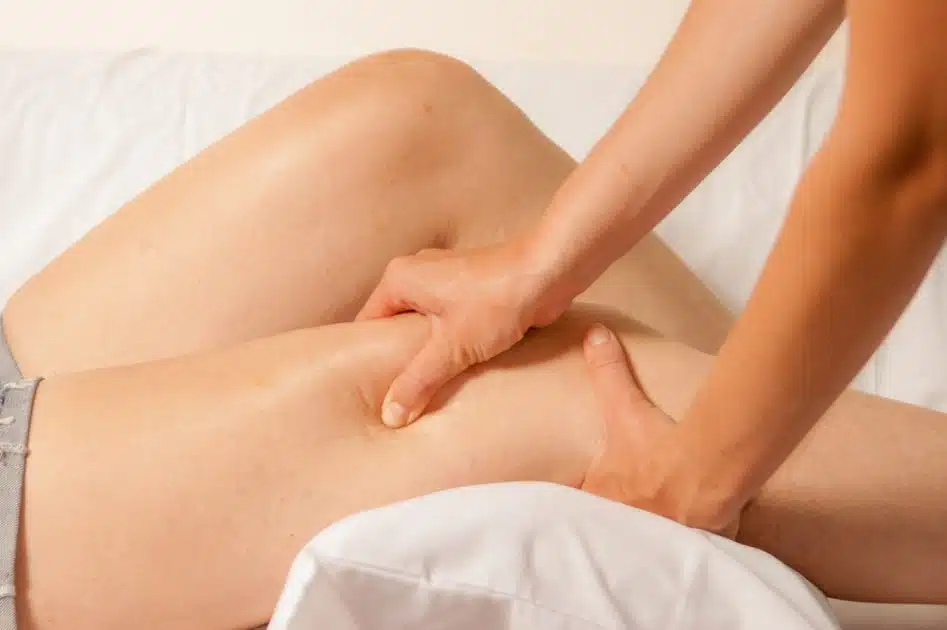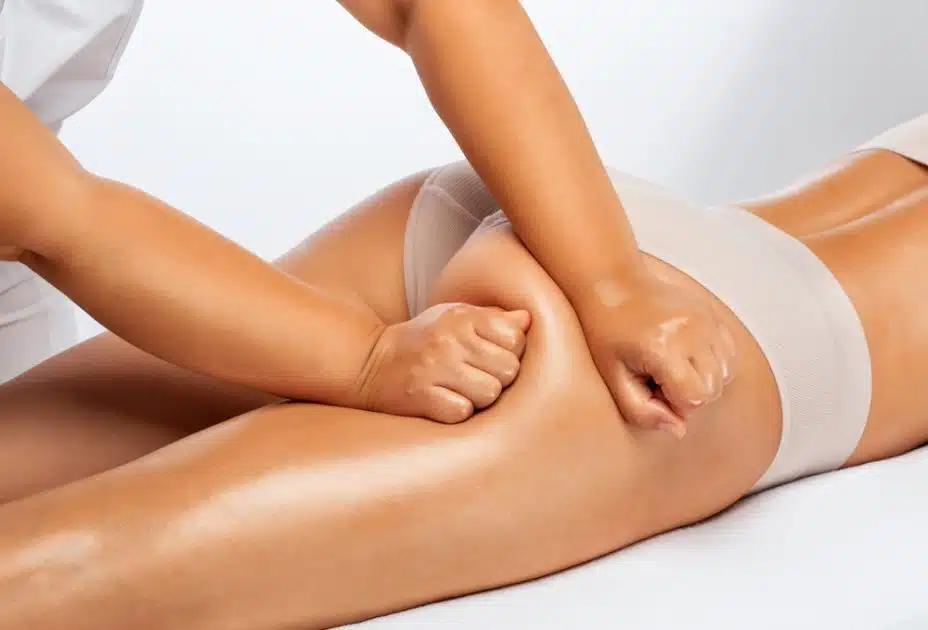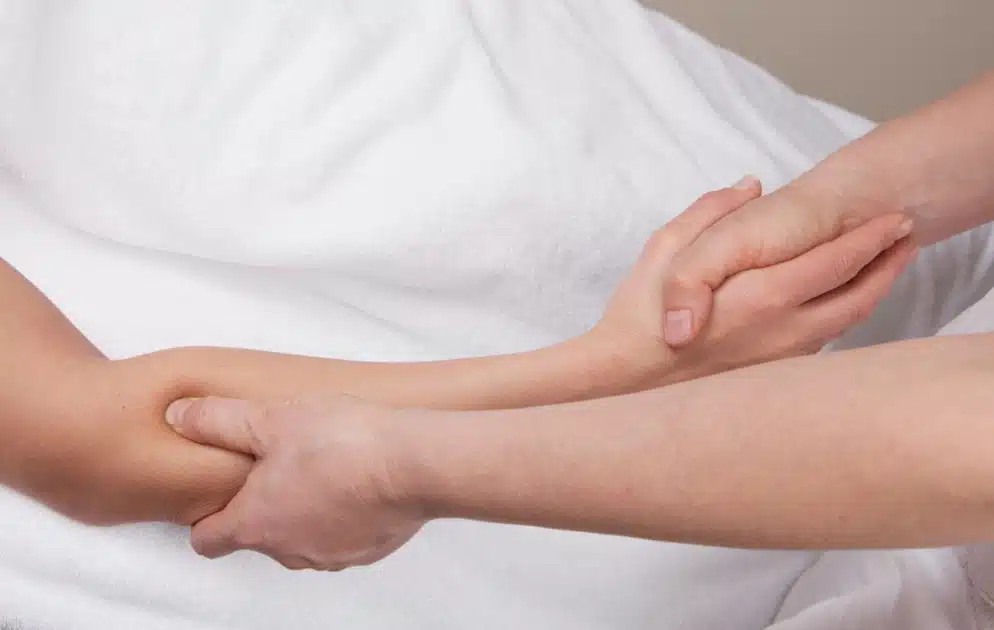Friction Massage

Revitalizing Tissues and Easing Tension: The Power of Friction Massage
What is Massage 14th Aug, 2023
Frictions are like targeted massages using fingers or thumbs on soft tissues. They’re often used to help with ligaments, tendons, fascia, and muscles. You can apply frictions by moving your fingers across the tissues or in circles.

The pressure can be deep or light, depending on what you need. Frictions help boost circulation and aid in healing. Around joints, they help loosen up and improve movement.
Principle Function of Friction Massage
Friction Massage aims to heal and improve functionality by transforming scar tissue that grows across muscle fibers. Our goal as therapeutic practitioners is to encourage fibroblast growth within these scars, creating flexible scar tissue that doesn’t cause pain or limit movement in daily activities.
This method combines key outcomes essential for healing soft tissues and promoting increased blood flow to remove pain-causing substances. Friction massage also moves structures to prevent adhesions, improves scar tissue quality, and activates pain relief receptors. It also supports the growth of fibroblasts, crucial for collagen repair and tissue health.
Recommended:
Percussion Massage Therapy
What Does Friction Massage Do?
Your PT can help you reach various goals by using friction massage on adhesions or scar tissue. This can lead to:
- Moving the affected tissue to break up scarring
- Aligning collagen fibers of the tissue
- Boosting blood flow to the tissue
- Easing pain
- Activating nerve fibers to reduce pain and enhance mechanoreceptor activity
The primary aim of any treatment in physical therapy is to improve your movement and overall well-being. Using friction massage on the affected tissue could be part of reaching this goal.
8 Techniques of Deep Friction Massage
Mastering the art of deep friction massage requires an unwavering dedication to a set of guiding principles—eight commandments that shape the precision and effectiveness of this therapeutic technique.
As therapists, we follow these important guidelines to ensure that each session is a harmonic combination of talent and competence, suited to the specific requirements of each client seeking assistance.

1. You should identify with precision
The initial rule calls for a careful evaluation. By checking movements and feeling around, we explore the body’s complex terrain to identify the specific tissue and spot causing discomfort. Understanding this well helps us address the core problem effectively.
2. Move as One
The heart of deep friction massage is all about moving together smoothly. The therapist and patient sync up, blending their movements gracefully to avoid skin injuries. This harmony guarantees that the healing touch stays calming and powerful.
3. Travel Perpendicular
Precision in direction is paramount. The third commandment dictates administering the friction massage perpendicular to the tissue’s fiber. This precise angle smooths the scar tissue, paving the way for restoration and ease of movement.
4. Leave No Scar Untouched
The fourth commandment is one of thoroughness. We ensure that the entire scar is treated with a sufficient sweep, addressing every nook and cranny to usher in a sense of comprehensive healing.
5. Respect Pain Tolerance
Amidst the pursuit of relief, we pay heed to the patient’s pain threshold. The fifth commandment dictates administering deep friction massage within the patient’s pain tolerance. This delicate balance ensures that the process remains bearable, with pain gradually diminishing as the session progresses.
6. Expose the Tender Tendon
The sixth commandment emphasizes the importance of posture. We guide the patient to adopt a position that adequately exposes the tendon, allowing for targeted treatment and maximal effectiveness.
7. Relax the Muscles
When the lesion lies within the muscle belly, the seventh commandment is brought to life. We gently relax the surrounding muscles, facilitating the separation of muscle fibers during the massage. This gentle manipulation sets the stage for deep healing and restoration.
8. Stretch for Success
The eighth commandment unfolds a key to triumph—stretching tendons with a sheath. This strategic maneuver ensures the greatest success in friction massage, priming the tissues for optimal responsiveness and progress.
Art forms have limitations and contraindications. Friction massage is effective but has restrictions. We avoid it for skin disorders, bacterial inflammation, rheumatoid arthritis, soft tissue calcification, bursitis, and tunnel syndromes. These protect patient safety, guiding us to alternative therapies when needed. With these principles in mind, we pursue healing with care and dedication, aiming to improve lives.
The Healing Power of Deep Friction Massage
Deep Friction Massage (DFM) has the ability to open a world of potential benefits, providing relief and rejuvenation to people seeking respite from pain and suffering. This unique approach combines a number of mechanisms, each of which contributes to its tremendous influence on the body’s healing processes.

1. Pain Relief Through the Gate Control Theory
At the heart of DFM’s pain-relieving prowess lies the gate control theory. By skillfully applying pressure to the affected area, therapists activate sensory nerves that compete with pain signals, effectively “closing the gate” on pain perception. This phenomenon provides individuals with temporary respite, easing their suffering and allowing them to experience a sense of relief.
2. Stimulation of Fiber Orientation in Regenerating Connective Tissue
Deep Friction Massage boasts a unique ability to influence the orientation of fibers during the regenerative process of connective tissues. As skilled therapists apply transverse friction in the early stages of tissue repair, they enhance remodeling and promote the realignment of collagen fibers in a longitudinal manner. This fosters the creation of stronger, more organized tissue structures, optimizing the body’s natural healing potential.
3. Prevention of Adhesion Formation
Adhesions, like unwelcome guests, can disrupt the body’s harmony by binding tissues together. DFM takes on the role of a vigilant guardian, preventing adhesion formation and ensuring that tissues maintain their capacity to move freely. Through the transverse movement of collagen fibers, DFM mobilizes scar tissue, breaking cross-linkages between connective tissues and the surrounding structures. This gentle intervention goes a long way in preserving the integrity of tissues and enhancing functional recovery.
4. Induction of Traumatic Hyperaemia
In the quest for healing, DFM unleashes a powerful ally: traumatic hyperemia. The forceful and deep movements of the massage effectively induce increased blood flow to the localized area of application. This rush of circulation serves multiple purposes: it aids in the removal of chemical irritants, facilitates the transportation of endogenous opiates, and enhances the transportation of essential healing factors. Ultimately, traumatic hyperemia plays a pivotal role in alleviating discomfort and fostering a more conducive environment for recovery.
5. A Powerful Ally in Tendinopathies Treatment
Deep Friction Massage has proven to be a powerful ally in the treatment of tendinopathies. While it can stand alone as a valuable intervention, its effectiveness is further heightened when combined with other therapeutic modalities. In synergy with complementary therapies, DFM enhances treatment outcomes and accelerates the journey toward restored function and improved quality of life.
Deep Friction Massage works wonders! It’s a one-stop-shop for healing, tackling everything from pain relief to preventing adhesions and boosting blood flow. When combined with other treatments, it’s a champ at dealing with tendinopathies, showing how versatile and effective it is. This therapeutic gem keeps folks feeling good and refreshed on their path to wellness.
Benefits of Frictions Massage
Frictions, with their therapeutic touch, reveal a treasure of advantages that promise greater well-being and quality of life. A symphony of benefits develops when competent therapists perform this therapeutic treatment, engulfing patients in a realm of healing and regeneration.
1. Increased Range of Movement: Frictions serve as a key to unlocking the gates of mobility. By treating tight and restricted tissues, this technique restores flexibility and expands the body’s range of movement. Tissues once bound by limitations find liberation, as frictions pave the way for increased joint mobility and improved functional capacity.
2. Improved Healing: At the heart of friction lies the art of healing. By delicately breaking down scar tissue and realigning tissue fibers, frictions foster the body’s natural repair processes. This focused approach accelerates the healing journey, enabling tissues to mend with newfound strength and resilience.
3. Decreased Pain: Frictions emerge as a balm for discomfort, providing respite from pain’s relentless grip. The skillful application of force disrupts pain signals, stimulating nerve fibers to alleviate pain temporarily. Patients find relief amidst discomfort, embarking on a path toward recovery and relief.
4. Common Body Parts Treated: Frictions offer their healing touch to various body parts, targeting specific concerns with precision and care. Among the areas that benefit from friction are the jaw, shoulder, arm, hand, and foot. From temporomandibular joint issues to shoulder injuries and beyond, frictions lend their therapeutic prowess to address a diverse range of conditions.
5. Complementary to Rehabilitation: While research suggests that friction massage may not be more effective than other rehabilitation techniques, its unique benefits make it a valuable addition to a comprehensive rehabilitation program. As part of a holistic approach to recovery, friction can play a crucial role in improving injured tissues’ mobility and promoting overall healing.
The numerous advantages of friction convey a powerful appeal to accept the therapeutic touch. This therapeutic approach opens the door to a world of possibilities, from expanded range of motion and better healing to pain reduction and supplementary rehabilitation. Therapists use the power of friction to motivate patients to begin on a healing path, guided by the promise of improved mobility and a life free of physical restraints.
Contraindications for Friction Massage
While Friction Massage has the potential for healing and comfort, there are several conditions in which the method should be avoided. These contraindications are critical criteria for ensuring patients’ safety and well-being.
1. Soft Tissue Ossification and Calcification
Friction massage is not advised for people who have ossification or calcification in their soft tissues. Because these hardened forms might be painful and prone to additional harm, friction massage is not recommended in such instances.
2. Tendinous Rheumatoid Lesions
Friction massage should be avoided by patients with rheumatoid tendinous lesions. The approach may aggravate the inflammation and sensitivity associated with this illness, perhaps leading to greater discomfort.
3. Psoriasis, Ulcers, or Blisters
Friction massage should not be used in places where there are ulcers, blisters, or psoriasis. These skin disorders are fragile and need expert treatment to avoid aggravation and severe consequences.
4. Bacterial Infections:
Patients suffering from bacterial illnesses should avoid undergoing friction massage. The technique’s strong motions can spread bacteria and aggravate the condition, offering health hazards to the patient.
5. Large Haematomas in the Area
When significant haematomas are present in the treatment region, friction massage is not advised. The use of force might interfere with the body’s normal healing processes and affect how blood clots.
6. Bursitis
Individuals with bursitis should avoid friction massage, as the technique may worsen inflammation in the affected bursa and lead to increased pain and discomfort.
7. Local Sepsis
Friction massage is contraindicated in cases of local sepsis, as it can spread infection and compromise the patient’s health.
8. Localized Skin Conditions
Friction massage should not be used in locations where there is a local skin condition. Eczema and dermatitis need particular treatment, and friction massage may aggravate symptoms and worsen the skin’s condition.
9. Skin that is fragile or friable
Patients with fragile or friable skin should avoid friction massage, as the technique’s forceful application may cause skin damage and complications.
Following these precautions ensures that friction massage is delivered safely and efficiently. To establish the suitability of the approach, therapists thoroughly analyze each patient’s medical history and present condition, putting patient safety and well-being first. Therapists assist patients to begin on their recovery path with confidence and faith in the therapy process by practicing care and awareness.
Recommended:
Acupressure Massage
Common Body Parts Treated by Frictions
Many body parts benefit from friction therapy. Some common areas treated include:
- Jaw
- Shoulder
- Arm
- Hand
- Foot
Frictions can also work on different body areas and help lessen scar tissue and pain effectively.
The Bottom Line
Friction massage stands as a beacon of healing—a therapeutic touch that reaches deep within the tapestry of soft tissues, unraveling knots of tension, and ushering in a symphony of rejuvenation. As skilled therapists apply this specialized technique, a world of benefits unfolds, empowering patients to reclaim mobility, overcome pain, and embark on a journey of restoration.
The art and science of friction massage intertwine, offering a versatile and adaptable intervention that addresses a diverse range of concerns. From breaking down scar tissue and realigning tissue fibers to promoting fibroblast proliferation and enhancing healing, friction massage reveals its transformative potential in every precise and deliberate movement.
With the knowledge of connective tissue anatomy and physiology at their fingertips, therapists navigate the intricate web of tissues, guiding the body toward optimal function and vitality. Each session is a symphony of healing, orchestrated with precision and care, attuned to the unique needs of every individual.
FAQs
What is the effect of cross-friction massage?
Cross friction massage helps reduce scar tissue, improve blood flow, and promote tissue healing.
How is friction massage performed?
Friction massage involves applying pressure in a crosswise direction to the affected area.
What is deep friction massage for?
Deep friction massage is used to treat tendonitis, soft tissue injuries, and musculoskeletal issues.
What is the purpose of transverse friction massage?
The purpose of transverse friction massage is to break down scar tissue and enhance tissue healing.
What is friction massage also known as?
Friction massage is also known as deep transverse friction massage (DTFM).
















